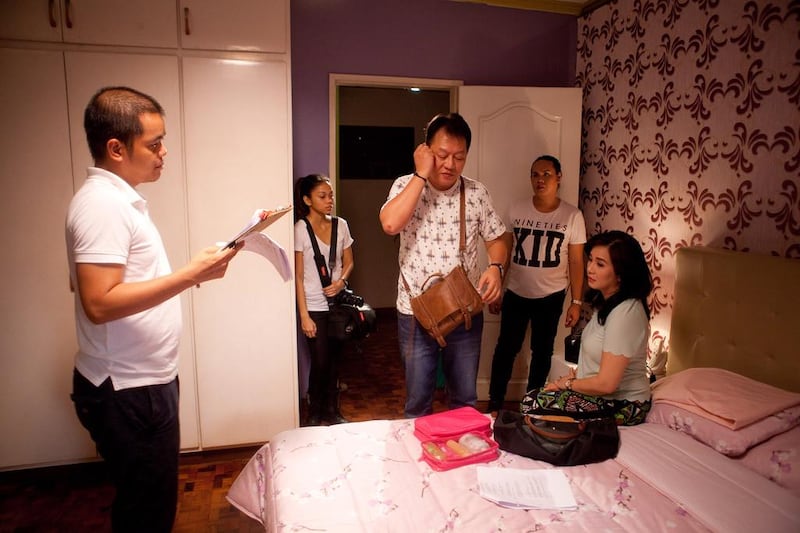Horror films have long been a staple of the Philippine movie industry. The combination of traditional beliefs and the diverse influences brought by colonisers has spawned a fascination with mythical creatures and urban legends.
Over the years, however, the films had become repetitive and predictable – but as the new millennium dawned, a new wave of horror flicks swept across South East Asia.
Films from Japan, Vietnam, South Korea, Thailand and Malaysia, among others, began generating a huge amount of buzz.
It was also about this time that the Filipino director Chito Roño and the screenwriter Roy Iglesias came up with the idea of a film inspired by superstitions surrounding the Chinese bagua – eight symbols used in Taoist philosophy to represent the fundamental principles of reality.
Released in 2004, Feng Shui told the story of Joy Ramirez (Kris Aquino), whose financial fortunes improve almost overnight after finding a bagua mirror left on a bus by a stranger. But while she finds luck in some aspects of her life, a string of misfortunes plague the people she knows.
It turns out that the mirror once belonged to a rich Chinese family who fled Shanghai at the height of the Sun Yat-sen revolution. In the confusion, they left behind a relative, who puts a curse on the bagua mirror.
After experiencing a series of tragedies in her own family, Joy destroys the mirror and decides to leave her home in an attempt to free herself from its curse.
The film ends with a new family moving into her house – with the restored bagua mirror on display, its curse set to continue to haunt the new owners.
Feng Shui was the highest-earning Filipino film in the country in 2004. The Filipino fondness for superstitions popularised by the Chinese translated well to the big screen and reviews were generally positive, with critics praising its fresh approach to the genre.
It wasn’t perfect, however. It would have benefited from better lighting to enhance the emotional tone of its scenes. And while, to her credit, Aquino showed slight improvement in her acting in this film, she lacked consistency and appeared stiff in some vital scenes.
To label Feng Shui as the best Filipino horror film is perhaps an exaggeration. It did, however, prove instrumental in reviving an interest in a genre that had been stagnating in the country. It encouraged local writers and producers to rethink their approach to scaring viewers.
Rather than simply recycling conventional folklore characters and situations, young writers started experimenting and incorporating psychological thrills into the mix.
Some of the noteworthy suspense-horror films that subsequently emerged from the Philippines included Ang Pamana: The Inheritance (2006); Ouija (2007); Siquijor: Mystic Island (2007); Blackout (2007); Villa Estrella (2009); and Patient X (2009).
Feng Shui's director, Roño, went on to make other, better horror films, including Sukob (2006), Tenement 2 (2009) and The Healing (2012).
And now, more than a decade later, comes a belated sequel to Feng Shui. It's been a long wait – and it almost did not happen at all.
"I don't like repeating myself. I get bored," Roño said last month. "Feng Shui 2 took a lot of time because I couldn't imagine how I was going to put it together. A decade is such a long time.
“At the same time, this is a celebration of the movie’s 10- year anniversary so there’s also that challenge.”
• Feng Shui 2 opens in UAE cinemas on January 15
[ artslife@thenational.ae ]





